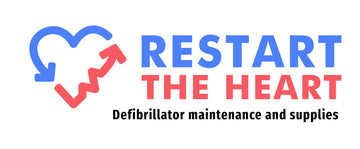Guide to AEDs in Sports Facilities: Ensuring Heart Safety for Athletes and Staff
Cardiac emergencies in sports settings are a severe and unsuspected threat that can strike athletes—irrespective of their fitness levels—at any time. In such terrifying instances where life hangs by a thread, having quick access to an Automated External Defibrillator (AED) can make the difference between life and death.
Sudden Cardiac Arrest (SCA) is not limited to matches or high-intensity training; it can occur during seemingly light workouts or even at rest. Hence, placing AEDs in sports facilities—where people regularly exert their bodies—isn't just good practice; it's potentially lifesaving. This article aims to shed light on the importance of AEDs in sports facilities, guiding staff and managers on how to make their premises a safer place for everyone.
In this comprehensive guide, we'll explore why sports facilities need AEDs, and reveal the essentials of selecting the right device for such an environment. We'll delve into the importance of properly training staff to use these devices and look at how to keep AEDs in top working condition.
The blog will also cover the relevant laws, standards and compliance issues related to AEDs, ensuring your facility doesn't merely adhere to regulations but indeed prioritises the safety of your athletes and staff. Lastly, we'll show how Restart the Heart, a trusted AED supplier in Australia, can be your reliable partner in imparting heart safety to your sports facility.
Navigating through the world of AEDs can feel daunting, but understanding them could tip the scales in a victim's favour during a cardiac emergency. Let's move forward together into the heart of this matter, promoting a safe and healthy sporting environment for all.
Sudden Cardiac Arrest in Sports: Know the Facts and Risks
Although athletes are often perceived as the embodiment of good health, Sudden Cardiac Arrest (SCA) is a silent risk lurking in all sports activities. SCA occurs when the heart experiences an abrupt malfunction, causing it to stop pumping blood effectively. It can strike individuals of any age and fitness levels without any warning signs, including seemingly healthy athletes with no prior history of heart problems.
Some potential causes of SCA in sport environments include undetected genetic heart conditions, commotio cordis (a sudden impact to the chest area), dehydration, and electrolyte imbalances resulting from heavy exercise. Given the severe threat posed by SCA, understanding the importance of AEDs in sports facilities is crucial for the welfare of athletes and staff alike.
The Importance of AEDs in Sports Facilities: A Life-saving Intervention
Automated External Defibrillators (AEDs) play a fundamental role in combating SCA by delivering a controlled electrical shock to restart the heart. Early defibrillation in conjunction with CPR greatly increases survival chances. In fact, defibrillation within 3-5 minutes of a cardiac arrest has been shown to increase survival rates up to 50-70%.
Therefore, ensuring AED accessibility in sports facilities can be a game-changer, turning a potentially tragic event into a tale of survival.
Choosing the Right AED for a Sports Facility: Features and Factors to Consider
Selecting an AED for your sports facility involves considering factors such as ease of use, compatibility with AED pads and batteries, and durability. It is also essential to think about the location size, number of users, and the types of sports activities taking place within the facility. Some AEDs come with additional features—such as voice prompts, audible metronomes for CPR, or multilingual support—which may prove beneficial in a sports facility setting.
Consulting with a trusted AED supplier, such as Restart the Heart, can significantly simplify the process of choosing the most suitable AED model for your sports facility, providing substantial peace of mind.
Training Staff to Use AEDs: Empowerment Through Knowledge and Practice
While most AEDs are user-friendly with clear instructions, ensuring staff are well-trained to use these devices is a crucial aspect of implementing an effective and heart-safe environment. This training should involve understanding the correct placement of AED pads on victims, the steps to conduct high-quality CPR, and familiarisation with the device's specific features.
Training sessions should be conducted regularly in conjunction with refresher courses, empowering your staff to react confidently and efficiently during cardiac emergencies.
Maintaining AEDs in Sports Facilities: Prioritising Readiness and Reliability
Proper maintenance practices are necessary to ensure your AED is ready for use whenever an emergency strikes. This includes regularly checking battery life and expiration dates, visually inspecting the AED for any signs of damage, and verifying the integrity of AED pads.
The AED should be easily accessible and prominently displayed, with signage indicating its exact location. Staff should be well-informed about the AED's placement, ensuring that no precious time is wasted during emergencies.
Legal Aspects and Compliance: Navigating Laws and Regulations
In Australia, AED legislation varies slightly across different states and territories. However, the focus is primarily on ensuring proper maintenance and compliance with manufacturer guidelines. Safe Work Australia's First Aid Code of Practice also advises that AEDs be used by individuals who have received appropriate training. To guarantee your sports facility is compliant with these regulations, it is essential to consult with local authorities, ensure ongoing staff training, and adhere to manufacturer maintenance specifications.
Conclusion
The importance of having AEDs in sports facilities cannot be overstated. By understanding Sudden Cardiac Arrest and the role AEDs play in combating this life-threatening condition, facility managers, coaches, and athletes can participate in creating a safer, heart-healthy environment.
Equipping your sports facility with the right AED, training your staff, and maintaining the device ensures you're fully prepared to face the unexpected occurrences of SCA. Restart the Heart is here to support you in this essential journey, providing high-quality AEDs, expert guidance, and comprehensive training programs. Together, we can make sports facilities across Australia safer and better equipped to handle cardiac emergencies when they arise.

